Armored Core is a third-person shooter mecha video game series developed by FromSoftware. The series centers on a silent protagonist who takes on work as a mercenary pilot in the far future, operating large robot combat units known as Armored Cores at the behest of corporate and private clients. As the player completes missions for these clients, they gain credits to improve their Armored Core and unlock further opportunities to make money. Some games include an "Arena" mode in which the player fights other Armored Core pilots in head-to-head battles, which can reward the player with further income or prestige.
FromSoftware, Inc. is a Japanese video game development and publishing company. It was founded by Naotoshi Zin in Tokyo on November 1, 1986. Initially a developer of business software, the company released their first video game, King's Field, for the PlayStation in 1994. Its success shifted FromSoftware to focus fully on games, with them producing two more King's Field games before creating the mecha combat series Armored Core (1997), one of their flagship franchises.

Armored Core is a 1997 third-person shooter mecha video game developed by FromSoftware and published by Sony Computer Entertainment for the PlayStation. It was originally released in Japan by FromSoftware in July 1997 and in North America in October 1997 and Europe in 1998 by Sony Computer Entertainment. The game is the first entry in the Armored Core series. A digital port was released in 2007 in Japan and 2015 in North America on the PlayStation Network as a part of the PSone Classics line of games.

Armored Core: Project Phantasma is a 1997 third-person shooter mecha video game developed by FromSoftware for the PlayStation. Project Phantasma is the second entry in the Armored Core series and a prequel to the original Armored Core. The game was not released in Europe.
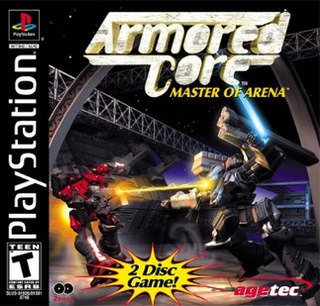
Armored Core: Master of Arena is a 1999 third-person shooter mecha video game developed by FromSoftware for the PlayStation. Master of Arena is the third entry in the Armored Core series and a direct sequel to Armored Core: Project Phantasma. It is the final game in the original Armored Core trilogy. The game was not released in Europe. An indirect sequel, Armored Core 2, was released on August 3, 2000, for the PlayStation 2.

Armored Core 2 is a 2000 third-person shooter mecha video game developed by FromSoftware for the PlayStation 2. It is the fourth entry in the Armored Core series and an indirect sequel to Armored Core: Master of Arena. In North America, Armored Core 2 was a launch title for the PlayStation 2. A direct sequel, Armored Core 2: Another Age, was released in 2001 for the PlayStation 2.
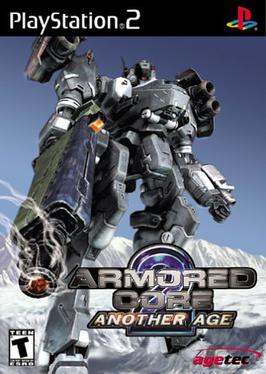
Armored Core 2: Another Age is a 2001 third-person shooter mecha video game developed by FromSoftware for the PlayStation 2. It is the fifth entry in the Armored Core series and a direct sequel to Armored Core 2. A reboot of the series, Armored Core 3, was released in 2002 for the PlayStation 2.

Armored Core 3 is a 2002 third-person shooter mecha video game developed by FromSoftware for the PlayStation 2. It is the sixth entry in the Armored Core series. Armored Core 3 acts as a reboot for the franchise and begins a storyline that would continue through Armored Core: Last Raven. In 2009, Armored Core 3 was ported to the PlayStation Portable.

Silent Line: Armored Core, known in Japan as Armored Core 3: Silent Line, is a 2003 third-person shooter mecha video game developed by FromSoftware for the PlayStation 2. It is the seventh entry in the Armored Core series and a direct sequel to 2002's Armored Core 3. In 2009, Silent Line: Armored Core was ported to the PlayStation Portable.

Armored Core: Nexus is a 2004 third-person shooter mecha video game developed by FromSoftware for the PlayStation 2. It is the eighth entry in the Armored Core series and a sequel to 2003's Silent Line: Armored Core. Unlike Silent Line, Nexus is not an expansion but rather a full-fledged sequel.

Armored Core: Last Raven is a 2005 mecha-based vehicular combat game developed by FromSoftware. It is part of the Armored Core series and is a direct sequel to Armored Core: Nexus (2004). The game was originally released for the PlayStation 2 and was ported to the PlayStation Portable in 2010. Gameplay remains largely unchanged from the game's predecessors and is centered around piloting a large mech in combat missions for various clients. The game is also notable for being the debut project of future FromSoftware president Hidetaka Miyazaki.

Armored Core: Formula Front is a mecha video game developed by FromSoftware and published by Agetec. It was a launch title for the PlayStation Portable in Japan, the 10th main installment in the Armored Core series.

Armored Core 4 is a 2006 mecha-based vehicular combat game developed by FromSoftware for the PlayStation 3 and Xbox 360. The fourth main entry of the Armored Core series, the game serves as a reboot for the franchise and is set in the future where a war has made the nations of Earth devastated and their respective governments have been replaced by corporations. Conflicts soon begin to break out between the corporations, which use massive combat robots, Armored Cores, to fight each other. The player is a Lynx, a name given to pilots of highly advanced NEXT Armored Cores.
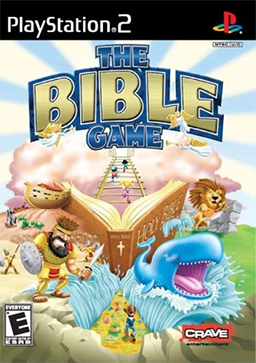
The Bible Game is a Christian party game developed by Mass Media and published by Crave Entertainment. It is aimed at Christians and is "family-friendly." There are a variety of trivia questions related to the Old Testament. The main two modes are "TV Game Show" and "Challenge Games." The latter lets players choose any minigame.

MechAssault 2: Lone Wolf is a 2004 video game developed by Day 1 Studios and published by Microsoft Game Studios exclusively for the Xbox console, and set in the BattleTech universe. Development of MechAssault 2 was announced shortly following the release of MechAssault, with the developers focusing on the expansion of online and networking features to capitalise upon the success of the original game as a pilot title for the Xbox Live online service, and creating a more open-ended gameplay style in which players are able to exit their mech and occupy multiple vehicles.

Strike Force Bowling is a video game of the sports genre released in 2004 by LAB Rats. A previous game, Fast Lanes Bowling, was published by Enlight Software for Microsoft Windows. The two games are very similar sharing the same physics engine and graphics, although Strike Force featured more locations as well as left-handed, and reverse-hook bowlers. LAB Rats assisted in the development of Brunswick Circuit Pro Bowling so the game has the same physics engine, but has a more fantasy-oriented theme. Strike Force features 14 places to Bowl and 8 Playable characters. There are only 7 locations, but each has its own "nighttime" variant which is unlocked as a secret stage. It also features Golf Mode, Challenge Mode, Skins, and Tournaments. There are also 14 different bowling balls to use, such as the Lightning, and level specific ones like the Bone Crasher and Pharaoh's Magic.
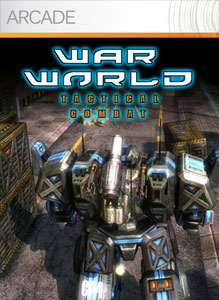
War World: Tactical Combat is a 3D mech combat simulator game developed and published by Australian company Third Wave Games. It was released on Microsoft Windows in 2005, and 2008 for the Xbox Live Arcade service.

Armored Core V is a mecha-based video game developed by FromSoftware and published by Namco Bandai Games for PlayStation 3 and Xbox 360. It is the 14th main installment in the Armored Core series and a return to the more traditional style of gameplay found in the original series of games.

AirMech is a free-to-play multiplayer online battle arena video game developed and published by Carbon Games for Windows, with Android and VR version in the works. Originally released onto Steam's early access program in November 2012 as the game was fully released in March 2018 under the name AirMech Strike, and additionally released a version on the Xbox 360, Xbox One and PlayStation 4 under the name AirMech Arena.
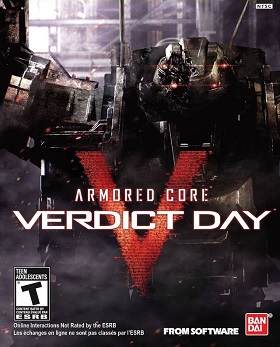
Armored Core: Verdict Day is a mech action game developed by FromSoftware and was published worldwide in September 2013 by Namco Bandai Games for PlayStation 3 and Xbox 360. It is the 15th installment in the Armored Core series and a direct sequel to Armored Core V.


















